4 Brands That Realize the Potential of Augmented Reality
Written by Kelly Short, Sales and Marketing Assistant at PowerChord
I remember when the thought of AR seemed like a pipe dream – something we thought could only be found at the end of a rainbow or in an episode of The Jetsons. I think we’d all agree that in the past, AR was perceived as so futuristic that it would be 2050 before we’d be able to utilize it in any real way.
Now it has become not only a reality but also a necessity for brands looking to create a more personalized and interactive shopping experience. Perhaps the most amazing opportunity AR presents is that it allows us to evaluate products as if they were right in front of us.
Gone are the days of wondering…
Will this dining room set fit in the corner of my room?
How will this shirt look with my black jeans?
Does this paint color match the theme of my home?
I am not the only one intrigued by this “phenomenon.” In fact, 60% to 70% of consumers see clear benefits in using AR and Internet of Things in their daily life and at work.
In daily life, 69% believed that the tech could help them learn new skills, 62% saw shopping benefits, and 62% saw healthcare benefits.
Brands are smart to adopt this technology as consumers are learning to expect AR as an option while researching products.
Below are a few brands that have been extremely successful in their AR adoption efforts.
IKEA Place
If the picture below looks familiar, you might remember it from last week’s article. Walking through a bustling IKEA store is overwhelming. I struggle to visualize what all the furniture pieces, light fixtures, and picture frames will look like inside my home. AR has proven to be a successful way to bring the in-store experience to life through personalization.
IKEA Place makes this decision for me. Their products are 3D and true-to-scale, ensuring every choice I make is one that is accurate in size, design, and function. Both IKEA and Anthropologie are using Apple’s ARKit to create their AR experiences, which is currently the largest AR platform in the world.
The IKEA Place app scales products based on the dimensions of your room with 98% accuracy. The precision and level of detail within the app are insane. I can see fabric texture, as well as how light and shadows are rendered inside my home.
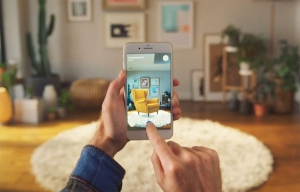
Sherwin-Williams ColorSnap
Color is present everywhere, and I find myself always wondering the name of it so I can distribute it around my living areas and workspace.
Sherwin-Williams’ ColorSnap, along with UK-based Dulux have made this task much simpler. The ColorSnap app allows you to explore a wide range of colors and virtually paint any room with your finger. Maybe you found a cool picture or a notebook with a unique color – ColorSnap will match the photo you’ve taken to find an exact color.
In our latest post, PowerChord’s VP of Digital Marketing stated that “AR is the ability to immerse consumers in a product/service offering that will continue to expand the ability for brands to create a connection with or a desire for that product/service”.
The ability to paint a wall without actually doing it is what gives ColorSnap an edge. They have created an experience that connects the product to the consumer in a personal way by using AR.
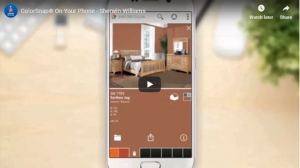
Magnolia Market
Magnolia Market is a standalone, brick and mortar store located in Waco, Texas, and owned by Fixer Upper’s Chip and Joanna Gaines. The home goods store has become quite popular, but owners agreed that their e-commerce efforts had the capacity to deliver the same results.
In order to support their e-commerce efforts, Magnolia Market debuted AR technology within their app to take the guesswork out of decorating. The goal of the Magnolia Market app was to ensure that customers were getting the same experience as they would if they were in the store.
They utilized ARKit to show as much detail and realism as possible. They wanted their shoppers to see their products from whatever angle they wanted – whether it’s from the front, back, top, or inside.
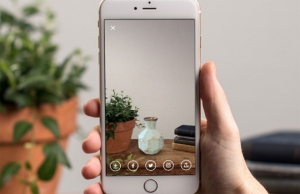
DressingRoom by Gap
It may seem that all of these apps are geared towards home goods, but leave it to Gap to create DressingRoom. It is designed to help customers try on clothing virtually through their smartphone.
Gap teamed up with Avametric, a San Francisco-based app developer, and Google to complete this task – creating avatar visual for their app. The avatars, which makes the app seem so realistic, allows shoppers to see how Gap’s products will fit their body type.
You may be wondering…
How do they know your size? Your body type?
Intrigued yet? (I was!)
First, a shopper chooses a style they might like. After providing body dimensions, they select one of the five body types provided. Afterward, an option to purchase appears.
According to Gap, the DressingRoom app is just one element of their long-term strategy to continually connect their shoppers with the brand.
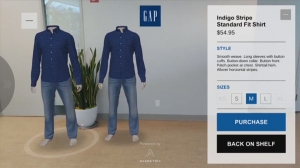
No slow-down in sight
As we’ve stated in previous posts, the AR/VR spend is projected to reach $53 billion by 2022. That being said, these brands are successfully capitalizing on that trend.
In today’s personalized, experience-driven economy, brands are quickly realizing the potential of selling experiences. I believe there is great opportunity for brands to create an environment that is visually appealing and convenient. I am excited to see where the future of AR takes us.
It’s only a matter of time before we move past AR and VR and start reaching for the next pie in the sky.

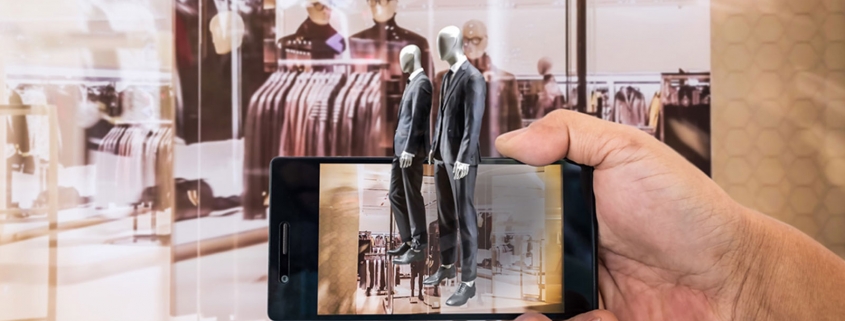



Leave a Reply
Want to join the discussion?Feel free to contribute!